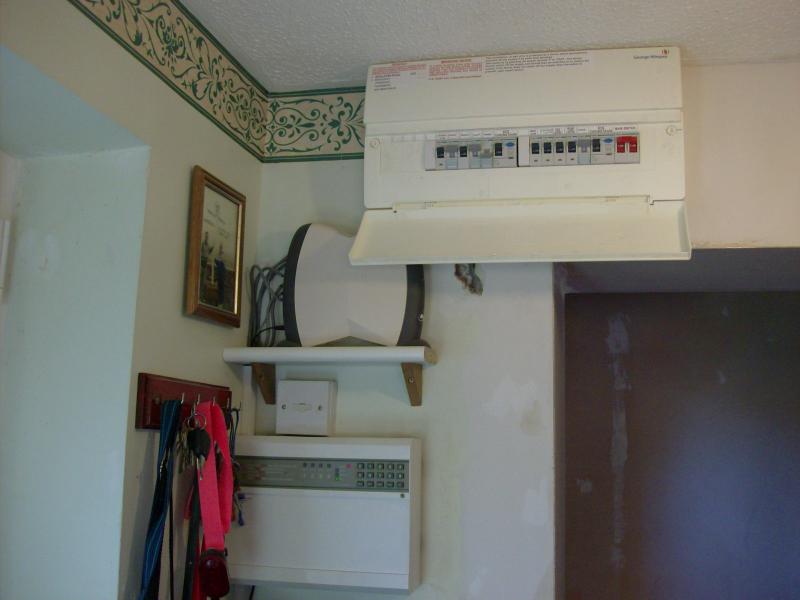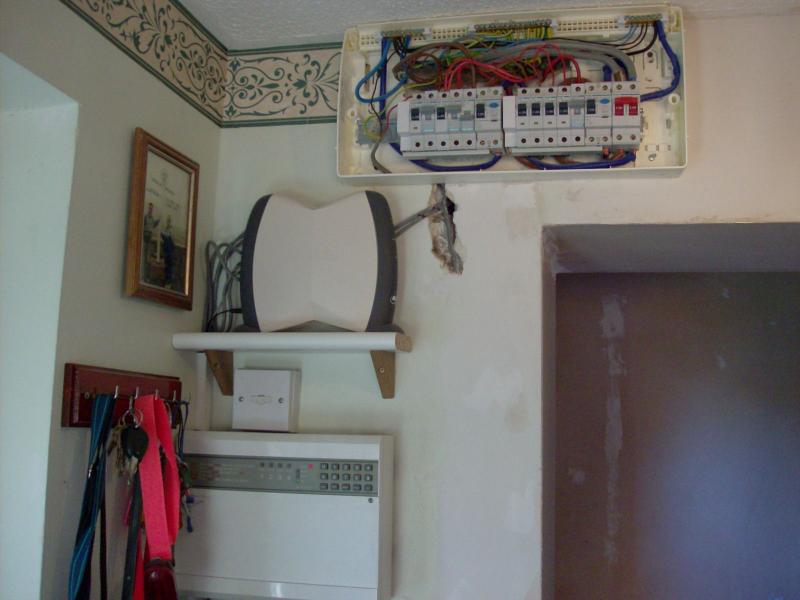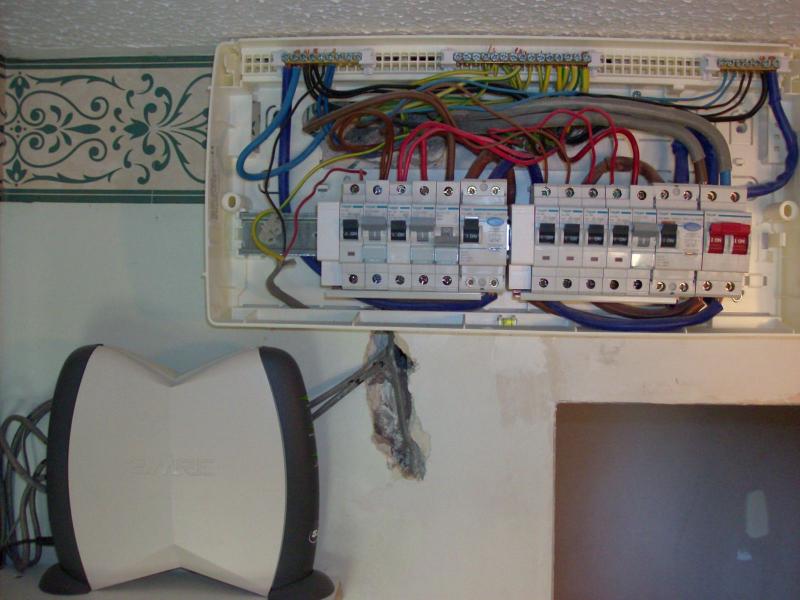Hello All. I'm new to this forum, but cannot directly see answer anywhere else as yet.
In my hall, above head height, I want to add a double socket almost adjacent to my consumer unit, to separately to power a broadband modem/router continually and maybe some christmas lights once a year so no major power draw. The ring main goes in a different direction and is impractical to link into.
I want the double socket to have it's own separate fuse/trip switch in the consumer unit (it's brand new and there's space). This is to do with a wired comms network I've got running through my house.
In my attached photo(s) you can see the modem/router above the house alarm (I'm going to be trunking in the loose cables), which already has a fused box with a 3amp fuse (linked to the far left trip switch on the consumer unit). What I'm asking is how it's best and safest done by myself. In addition to the double socket, do I need a separate fused box like the house alarm between the double socket and the consumer unit and if so what size fuse goes in the in each.
Hope this makes sense and I haven't added in too much information than necessary. It seems such a simple job but I wish to do it myself and seek your experienced advice.
Many Thanks. [/img]
In my hall, above head height, I want to add a double socket almost adjacent to my consumer unit, to separately to power a broadband modem/router continually and maybe some christmas lights once a year so no major power draw. The ring main goes in a different direction and is impractical to link into.
I want the double socket to have it's own separate fuse/trip switch in the consumer unit (it's brand new and there's space). This is to do with a wired comms network I've got running through my house.
In my attached photo(s) you can see the modem/router above the house alarm (I'm going to be trunking in the loose cables), which already has a fused box with a 3amp fuse (linked to the far left trip switch on the consumer unit). What I'm asking is how it's best and safest done by myself. In addition to the double socket, do I need a separate fused box like the house alarm between the double socket and the consumer unit and if so what size fuse goes in the in each.
Hope this makes sense and I haven't added in too much information than necessary. It seems such a simple job but I wish to do it myself and seek your experienced advice.
Many Thanks. [/img]




